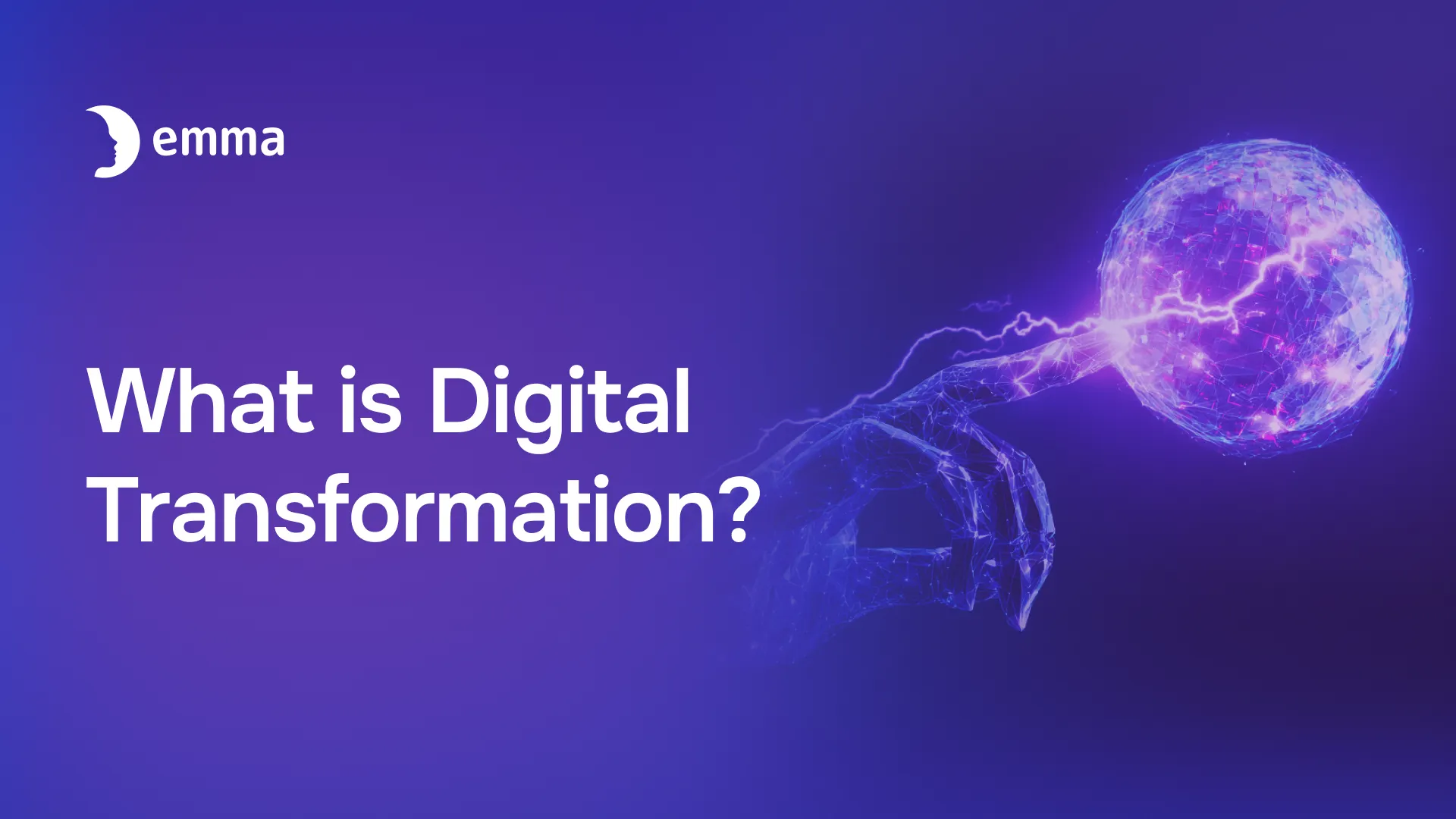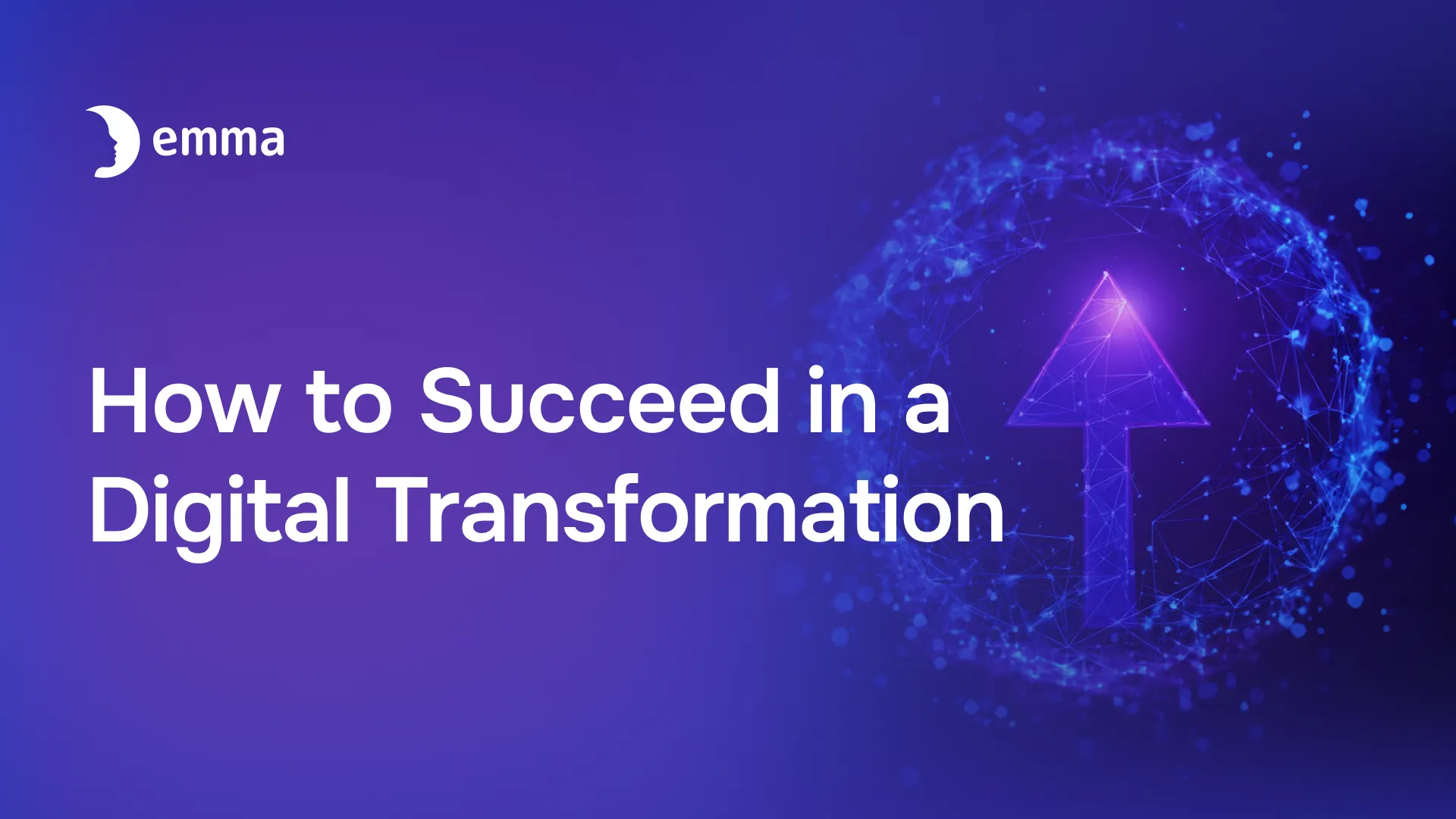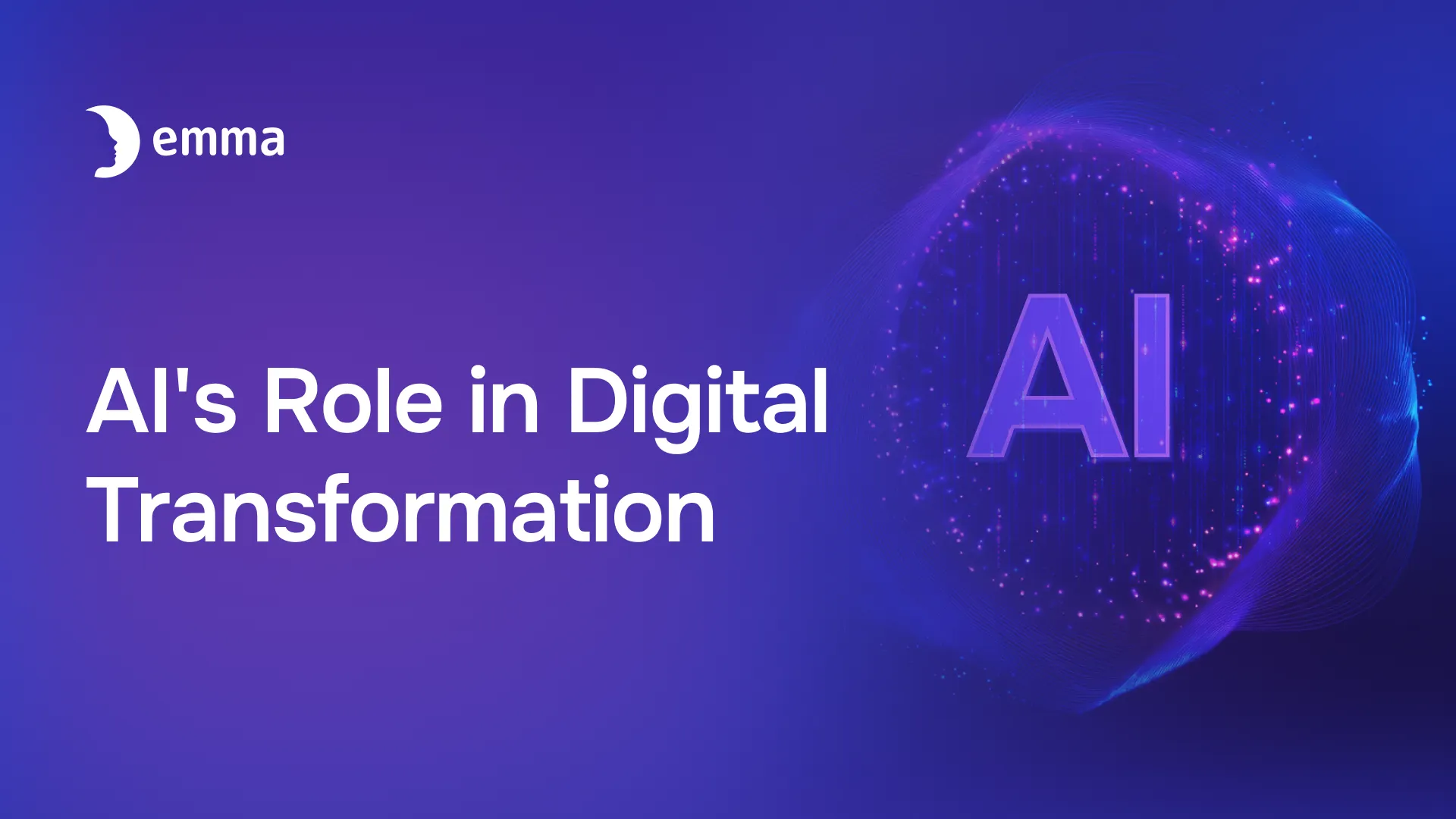Digital transformation is a term that comes up frequently in boardrooms, strategy papers, and technology discussions, but it is not always well understood. Many leaders associate it only with adopting new technologies or upgrading outdated systems, when in fact it represents a much broader shift in how organizations grow, compete, and deliver value in a digital-first world.
This in-depth article will demystify digital transformation, addressing key questions to provide a clear roadmap for understanding and implementing this critical shift.

Digital transformation is the strategic adoption of digital technology to fundamentally change how an organization operates and delivers value. It's a holistic process that impacts every facet of a business, from customer experience and operational processes to business models and organizational culture.
It goes beyond simply digitizing analog processes like scanning paper documents and focuses on using digital tools to create more efficient, innovative ways of working. This includes:
Consider the difference between a traditional retailer and an e-commerce platform. A retailer might use digital tools for point-of-sale systems or online ads. However, an e-commerce company is built on digital infrastructure, with pricing, supply chains, marketing, and customer service all driven by real-time data and automation. This allows it to adapt quickly, personalize offers at scale, and operate more efficiently than traditional retailers.
Digital transformation is essential for organizations to survive and grow in a fast-evolving market. Companies that adopt it can scale quickly, serve customers better, and create new value. A few major benefits include:
Modern customers expect speed, personalization, and consistency across every channel. Digital transformation makes this possible by connecting data from different touchpoints like websites, apps, and support systems into a single view. With this integration, businesses can anticipate customer needs, resolve issues quickly, and create experiences that build long-term loyalty.
Manual processes slow organizations down and create room for error. Automation and standardized workflows reduce these risks while freeing employees to focus on work that drives growth. The result is lower costs, greater reliability, and faster delivery times, which directly benefit both the business and its customers.
Markets change quickly, and companies that rely on traditional systems often struggle to keep up. With digital platforms, organizations can launch new products faster, adjust services in response to customer feedback, and test ideas without major upfront costs. In turn, this agility enables continuous innovation instead of waiting for large, infrequent overhauls.
Every digital interaction generates valuable data, but it only becomes useful when it is captured, analyzed, and applied. Digital transformation equips organizations with tools to turn raw data into actionable insights, whether for improving day-to-day operations, refining customer targeting, or guiding long-term strategy.
Businesses that embrace digital transformation can respond more quickly to customer demands, offer better experiences, and adapt their operations in ways that traditional competitors cannot. This advantage allows them to capture market share and strengthen their position.
Digitization opens the door to entirely new ways of generating income. Companies can develop subscription services, digital products, or monetize data insights. These new streams diversify revenue and reduce the organization's reliance on a single business model, making it more resilient to change.

Success in digital transformation requires a strategic, holistic, and people-centric approach.
Clear Vision and Strategy: Define what digital transformation means for your organization. Think about what problems you are trying to solve and what opportunities you are trying to seize. Align your digital initiatives with overarching business goals.
Leadership Commitment: Senior leaders must act as visible champions, provide necessary resources, and communicate the importance of the transformation. Their support drives organization-wide adoption.
Customer Focus: Start by understanding customer needs, determining how digital tools can enhance their experience, address pain points, and deliver new value.
Culture of Innovation and Agility: Foster an environment where experimentation is encouraged, failures are learned from, and continuous improvement is the norm. Embrace agile methodologies for project management.
Employee Empowerment and Training: Equip your workforce with the skills and tools they need to thrive in a digital environment. Provide comprehensive training and foster a growth mindset.
Data and Analytics: Build strong data governance to ensure accuracy and accessibility. Use analytics to guide better decision-making and uncover insights.
Phased Implementation with Quick Wins: Break down the transformation into manageable phases. Celebrate quick wins to build momentum and demonstrate value.
Partnerships: Consider collaborating with technology providers, startups, or even competitors to leverage external expertise and accelerate your transformation.
Continuous Adaptation: Continuous Adaptation: View transformation as an ongoing effort. Regularly review outcomes, track performance metrics, and adjust plans as market conditions and technologies evolve.
A range of powerful technologies serves as the backbone of digital transformation. Understanding these can help organizations identify the right tools for their specific needs.
Cloud Computing: Provides scalable, flexible, and cost-effective infrastructure for applications and data storage. It enables remote work, supports rapid innovation, and reduces reliance on on-premise hardware. This allows businesses to launch new applications in days instead of months, scale resources based on demand, and avoid large upfront hardware costs.
Artificial Intelligence (AI) & Machine Learning (ML): Enables automation, predictive analytics, natural language processing, and personalized experiences across various functions, from customer service to supply chain optimization. For example, AI chatbots can handle routine customer inquiries, ML algorithms can forecast demand to improve inventory planning, and natural language models can analyze customer feedback at scale.
Big Data Analytics: The ability to collect, process, and analyze massive datasets to uncover trends, patterns, and insights that inform strategic decisions and drive operational improvements. Companies can use it to identify customer purchasing habits, detect fraudulent activity in real time, or optimize logistics routes to cut delivery times and costs.
Internet of Things (IoT): Connects physical devices, sensors, and machines to the internet, allowing for real-time data collection, remote monitoring, and automation in industrial, logistical, and consumer applications. For instance, a manufacturer can use IoT sensors to track equipment health, predict failures before they happen, and reduce costly downtime.
Robotic Process Automation (RPA): Software robots automate repetitive, rule-based tasks, improving efficiency, reducing errors, and freeing human employees for more complex work. Common applications include automatically processing invoices, updating customer records across systems, or transferring data between applications without human intervention.
Blockchain: Offers a secure, decentralized, and transparent ledger for transactions, with applications in supply chain traceability, financial services, and digital identity.
5G Connectivity: Provides ultra-fast, low-latency wireless communication. This supports new applications for IoT, autonomous vehicles, and real-time data processing at the edge.
Cybersecurity Solutions: As digital footprints expand, robust cybersecurity measures are paramount to protect data, systems, and maintain trust. These solutions prevent breaches, ensure regulatory compliance, and safeguard customer confidence.

Artificial Intelligence is a key driver of digital transformation since it enhances the impact of other digital technologies. It makes systems smarter by analyzing large amounts of data, spotting patterns that humans might miss, and suggesting actions based on those insights.
Enhanced Customer Experiences: AI-powered chatbots and virtual assistants provide 24/7 support, which reduces wait times and makes interactions more personalized. Recommendation systems analyze customer preferences, past purchases, and browsing history to suggest relevant products, making shopping quicker and more tailored.
Advanced Data Analytics: AI processes large amounts of data in minutes to reveal hidden patterns that help businesses make informed decisions. These insights lead to more accurate forecasting and better strategic choices.
Automated Operations: Robotic process automation (RPA) streamlines repetitive tasks such as invoice processing and record updates. In industrial settings, machine learning predicts equipment failures in advance, minimizing downtime and improving resource utilization.
Product and Service Innovation: Artificial intelligence enables the creation of products and services that adapt to users in real-time. For example, smart thermostats learn household routines, and digital health apps personalize treatments, creating new revenue opportunities and setting businesses apart from competitors.
Optimized Resource Management: AI improves supply chain planning, inventory management, and energy efficiency. It helps businesses avoid delays by rerouting shipments, keeps stock levels balanced, and reduces energy costs, all of which improve reliability and lower expenses.
Fraud Detection and Cybersecurity: AI boosts security by monitoring network activity for unusual behavior, such as unexpected transactions or failed logins. Early detection alerts security teams to potential threats, which helps prevent financial loss and protect sensitive data.
Examples of Digital TransformationDigital transformation is impacting businesses worldwide. Here are a few key examples:
Amazon revolutionized retail by creating a digital-first ecosystem with personalized shopping, AI-driven recommendations, and efficient logistics. Traditional retailers like Target have also adapted by integrating online and in-store experiences, offering curbside pickup, and using data to optimize inventory and marketing.
Traditional banks have embraced mobile apps, online portals, and AI customer service to improve accessibility. Fintech companies like Chime and Revolut offer instant payments, budgeting tools, and personalized financial advice, providing superior digital experiences and lower costs compared to traditional banks.
Digital transformation is reshaping healthcare delivery by connecting patients, clinicians, and data in real time. Telemedicine platforms let patients consult doctors through secure video or mobile apps, expanding access to care in remote or underserved regions.
Electronic Health Records (EHRs) centralize patient data, enabling doctors, nurses, and specialists to share information instantly and coordinate treatment. Wearable devices extend care beyond clinics by tracking metrics like heart rate, sleep, or glucose levels. Data from all these technologies provide clinicians with continuous insights and support early intervention and personalized care plans.
Manufacturers are using IoT, AI, and robotics to create smart factories. For example, Siemens uses digital twins to simulate and optimize production processes. Predictive maintenance reduces downtime and improves resource allocation.
Netflix and Spotify use data to offer personalized content recommendations. This shift has transformed how media is consumed, making it more engaging and tailored to individual preferences.
Tesla has led the way in electric vehicles by integrating software, over-the-air updates, and autonomous driving features. The automotive industry is moving towards connected cars, offering navigation, infotainment, and predictive maintenance powered by digital technologies.
The emma platform simplifies one of the most challenging parts of digital transformation by helping organizations modernize their infrastructure while maintaining control over cost, compliance, and performance.
Instead of stitching together multiple tools and providers, emma gives you a single platform to design, deploy, and manage workloads across on-premise, hybrid, and multi-cloud environments. This unified approach means you can transform faster, with less risk and greater visibility.
Here’s how emma supports that journey in practice:
Request a demo to see how emma powers digital transformation by unifying cloud migration, workload management, and governance into one streamlined platform.